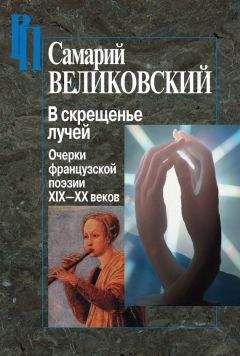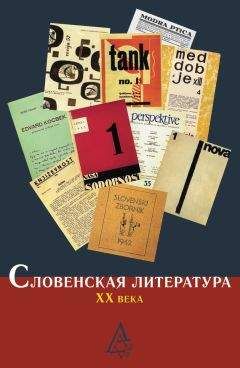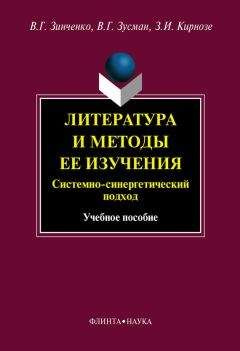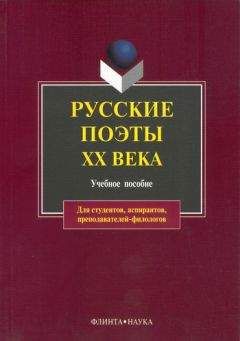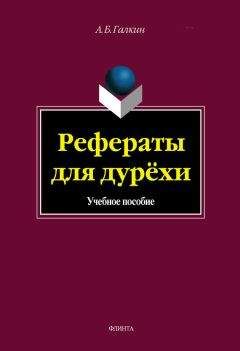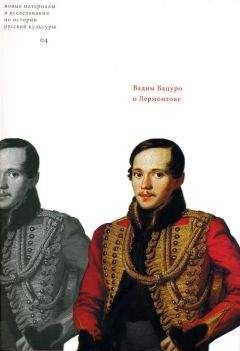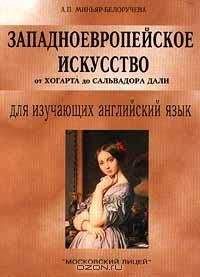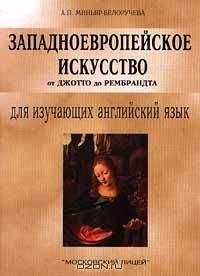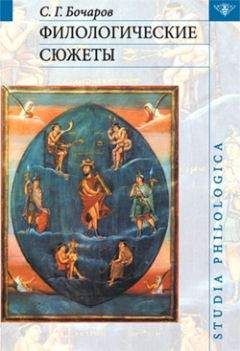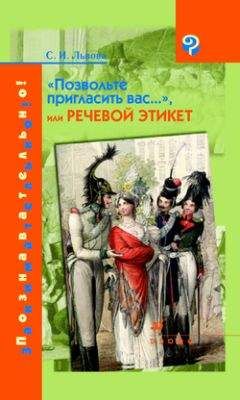Илья Кукулин - Машины зашумевшего времени
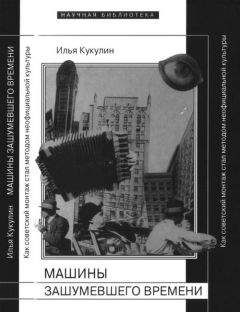
Скачивание начинается... Если скачивание не началось автоматически, пожалуйста нажмите на эту ссылку.
Жалоба
Напишите нам, и мы в срочном порядке примем меры.
Описание книги "Машины зашумевшего времени"
Описание и краткое содержание "Машины зашумевшего времени" читать бесплатно онлайн.
Эта книга — попытка заново выстроить историю русского модернизма через историю монтажа. Развитие монтажа в культуре XX века получило мощный импульс после изобретения кинематографа и превращения его в модный вид искусства. Аналоги киномонтажа в 1920‐е годы сложились в других видах искусств — литературе, плакатной графике, театре. У разных авторов и в разные периоды он используется то как локальный прием, то как последовательный метод, то как целостная эстетика. В 1930–2000‐е годы монтажные методы неоднократно изменяли свои функции и семантику. Следя за тем, как они от десятилетия к десятилетию то становятся почти незаметными, то вновь используются в самых разных контекстах, можно увидеть принципиально новые сюжеты в развитии искусства конца XIX–XXI веков, от Стефана Малларме до интернетных коллажей, составленных из блоговых заметок и видеозаписей. Эта книга рассказывает о том, как монтаж сначала стал «стилем эпохи» 1920‐х годов в самых разных странах (СССР, Германия, США…), а после все больше оказывался нужен неподцензурной словесности и «альтернативным» направлениям в кино и визуальном искусстве. Среди героев книги — Дзига Вертов и Артем Веселый, Сергей Эйзенштейн и Александр Солженицын, Эль Лисицкий и Саша Соколов, Энди и Лана Вачовски и Павел Улитин.
Some authors living in the USSR transformed montage’s meaning in their texts in order to critically revisit the Bolshevik image of history, and to resist state-controlled propaganda. Such texts — including prose works by Lev Luntz, Mikhail Bulgakov, and Daniil Kharms — were kept from the Soviet public, or were «written for the drawer,» without the expectation of receiving the censor’s approval. Such texts and works of art are designated non-censored art, to utilize a term that has been accepted in Russian underground criticism since the 1970s.
The image of a «creative violent modernity» was significantly transformed during the 1930s in Western Europe, North America, Nazi Germany, and the USSR; however the shifts in this image had different sources and varied in their results. In Western Europe and North America, the collective feeling of an impending social crisis, generated by the rupture of the social order after WWI, became weaker or more habitual. The growth of mass culture, as well as the collective rush towards emotional escapism in the face of WWII’s approach, prompted the expansion of comforting melodramatic plots in cinema and literature. These plots did not require sharp montage; on the contrary, such stories inclined writers and directors to use even-tempered, non-conflicting styles of narrative and/or portrayal.
In Nazi Germany, montage devices, which propagandist media associated with «left» and «degenerate» (i.e. «Jewish») art, became forbidden. Artists who used montage techniques were often forced to leave the country. However, several artists became the creators of the «Nazi avant-garde,» which combined sharp montage and pseudo-neoclassical aesthetics, as in the work of notorious film director Leni Riefenstahl.
At the same time, during the 1930s Soviet authorities initiated a radical cultural and political turn toward «national-Bolshevism» (to use David Brandenberger’s understanding of this term). This shift was marked by the emergence of a new image of Soviet contemporaneity as the «space of triumph» (rephrasing Mikhail Ryklin’s term «the spaces of jubilation»), and not as the launching pad for utopia. In its self-representation, the USSR turned away from a project aimed at a utopian future for all mankind, and instead toward the image of a flourishing but isolated empire that had already accomplished everything desired. Under these new circumstances, melodramatic plots (demonstrating Soviet interpretation of Hollywood style), encouraged the «indigenous» weakening of montage aesthetics. These plots sought to emotionally mobilize the audience, and to represent neo-imperial Bolshevik ideology as natural, kind, and inevitable. However, the futuristic connotations of montage techniques were revived in the aesthetics of Soviet pavilions for international exhibitions; former avant-garde artists were among the designers of these pavilions, including Nikolai Suetin, who, as a student, worked closely with Kazimir Malevich.
The only artists who maintained a taste for montage in Western European and American literatures of the late 1930s and 1940s were those who interpreted the historical period before and during WWII as transitional or catastrophic, rather than progressive: Döblin, Brecht, Dos Passos, Čapek.
In Russian culture, new meanings of montage were further developed in non-censored literature. Here, prose works by Arkadii Belinkov and unpublished verses by Vladimir Lugovskoy and Daniil Andreev are discussed. The revival of montage in Russia was closely associated with unofficial discussions on the «neo-baroque» — a style that was conceived by Ilya Ehrenburg and Arkadii Belinkov as a restoration of radical modernism in the context of WWII, confronting 1930s socialist realism.
In evaluating the evolution of twentieth century Western art, scholars such as Vladimir Paperny and Boris Groys argue that avant-garde and socialist realism/totalitarian art were the unified aesthetic systems. If this is true, only one question remains: was the avant-garde a logical predecessor of socialist realism, or did socialist realism emerge as the total repressive negation of the avant-garde? As it is argued in this book, the relationship between the avant-garde and socialist realism is more complicated and nonlinear than previously understood. In the late 1930s and 1940s, the techniques of montage were transferred into a new context, and there they survived. Moreover, careful examination of the aesthetic movements of the 1910s-1940s gives reason to reject the essentialist opposition of the avant-garde and socialist realism.
During late 1930s and 1940s, post-utopian montage gradually came into being in Western cultures and in Russian non-censored art. Now, montage did not point to a desirable future, nor did it depict contemporaneity as a battlefield of conflicting forces. Rather, the main task of post-utopian montage was to represent history as a series of ruptures, fragmenting and reordering a private and/or social experience. Even though Brecht and Eisenstein maintained hope for a progressive future, their works nevertheless acquired the features of post-utopian montage.
A flourishing of montage aesthetics once again took place during the late 1950s and 1960s, both in the «First World» and in the USSR. However, this montage had a new meaning: much more than before, it was post-utopian and guided by the problems of (artistic) language, mimicking in technique the peculiarities of different types of human perception. American conceptual art of the early 1960s was a prominent example of this trend, as well as the films shot at the end of the 1960s by the French radical left Dziga Vertov Group, which included Jean Luc Godard. In the USSR, montage was revived even in official art movements, adapting to reshape Soviet society; this reshaping, as it is possible to demonstrate, was conceived by post-Stalin political elites of the late 1950s and early 1960s.
Montage in literature and film became a powerful tool of critiquing utopian projects. Originally, this aesthetic move was based on engagement with the trends of the 1920s, and on the resumption of «revolutionary modernism.»
However, in the 1970s, montage styles that grappled with the 1920s ceased to be regarded as productive and foundational for new artistic movements. Authors and artists of the 1970s no longer took up the debates of the 1920s, but rather those of their immediate predecessors: the artists and authors of the 1960s. Hence, 1920s montage became part of the history of art, not art’s «yesterday.»
The next development in montage aesthetics can be understood as analytic or historicizing montage, which reveals how contemporaneity has ceased to function as the synchronism of conflicting forces. The concept of a united but contradictory «present-day moment» (as Hans Ulrich Gumbrecht describes it in In 1926: Living on the Edge of Time) gives way to the notion of a meeting point of historically heterogeneous images and discursive practices, mutually alienated from one another in personal and/or collective memory due to the historical traumas of the twentieth century.
I discuss the development of historicizing montage by comparing in detail the texts and aesthetic methods of two coeval but totally different Russian writers: Alexander Solzhenitsyn (1918–2008) and Pavel Ulitin (1918–1986). While Solzhenitsyn’s works and life are well known, Ulitin’s works did not become part of any curriculum in Russia or in the West. Ulitin was the most aesthetically radical Russian writer of the 1950s–1970s. I compare his essays and collage books with cut-ups by William Burroughs and Brion Gysin, analyzing their parallels.
The final chapter is focused on the transformations of montage during the 2000s and 2010s. As this study aims to show, these trends are caused by the development of new media (including Web 2.0), and by changes in the historical imagination of artists. Here I analyze digital narratives in blogs, fragmentation experiments in popular literature and cinema (e.g. the novel Cloud Atlas by David Mitchell and its film adaptation by Tom Tykwer and Lana and Andy Wachowsky), and linguistic ruptures in contemporary Russian poetry.
Примечания
1
См. обсуждение этой темы в работах: Винокурова И. «Всего лишь гений». Судьба Николая Глазкова. М.: Время, 2006; Павловец М. Г. Три «прачечных (футурных)»: Анна Ахматова, Алексей Крученых, Генрих Сапгир // Toronto Slavic Quarterly. 2011. Spring. № 36. P. 105–118; Он же. Канонизация русского футуризма в неподцензурной поэзии 1950–1960‐х годов // Филологические традиции в современном литературном и лингвистическом образовании: Сб. науч. ст.: В 2 т. Вып. 11. М.: МГПИ, 2012. Т. 1. С. 154–161; Бурков О. А. Поэзия Евгения Кропивницкого: примитивизм и классическая традиция. Автореф. дис. … канд. филол. наук. Новосибирск: НГПУ, 2012; Сурикова О. А. Русский самиздат 1960–1980‐х годов: Судьба поэзии модернистов и ее традиции. Московские творческие объединения и периодические издания. М.: МГУ, 2013; Юрьев О. Заполненные зияния: Книга о русской поэзии. М.: Новое литературное обозрение, 2013.
2
Савицкий С. Андеграунд: История и мифы ленинградской неофициальной культуры. М.: Новое литературное обозрение; Кафедра славистики Университета Хельсинки, 2002. С. 31.
3
Серов В. Энциклопедический словарь крылатых слов и выражений. М.: Локид-пресс, 2004. С. 438. Подробнее об отношениях участников неофициального культурного движения с политикой см., например: Савицкий С. Указ. соч. С. 17–41.
4
Айзенберг М. Н. Некоторые другие (Вариант хроники: первая версия) // Театр. 1991. № 4. С. 98–118. Републикация: Он же. Взгляд на свободного художника. М.: Гендальф, 1997; Кривулин В. Охота на Мамонта. СПб.: Блиц, 1998. С. 6–10, 127–143.
5
Успенский Б. А. Поэтика композиции. Структура художественного текста и типология композиционной формы // Успенский Б. А. Поэтика композиции. СПб.: Азбука, 2000. Впервые: Он же. Поэтика композиции. М.: Искусство, 1970.
6
См. об этом: Варбург А. Язычески-античное пророчество лютеровского времени в слове и изображении / Пер. с нем. Е. Козиной // Варбург А. Великое переселение образов. Исследование по истории и психологии возрождения античности. СПб.: Азбука-классика, 2008. С. 252–284 (см. также иллюстрации); Ямпольский М. Б. Ткач и визионер. Очерки истории репрезентации, или о Материальном и идеальном в культуре. М.: Новое литературное обозрение, 2007. С. 125–136.
7
Подробнее см., например: Земляной С. Левая эстетическая теория о мимесисе и катарсисе. Заочные дебаты между Лукачем и Брехтом 30‐х годов XX века // Синий диван (журнал). 2004. Вып. 5; Lima L. C. (Űbers. von E. Spielmann), Fontius M. Mimesis/Nachahmung // Ästhetishe Gründbegriffe: Im 7 Bd / Hrgs. von K. Barck, M. Fontius, D. Schlenstedt u.a. Stuttgart; Weimar: J. B. Metzler, 2010 (2 Aufl.). Bd 4. S. 108–109.
8
Библер В. [Выступление на конференции] [Расшифрованная магнитофонная запись выступления по докладу Вяч. Вс. Иванова на конференции по проблемам монтажа в Москве в 1985 г.] // Библер В. Замыслы: В 2 т. Т. 1. М.: РГГУ, 2002. С. 815.
9
Из многочисленных работ на эту тему см., например: Bürger P. Theory of the Avant-Garde / Trаnsl. from German by M. Shaw. Minneapolis: University of Minnesota Press, 1984. P. 73; Гирин Ю. Н. Смыслообразующие концепты культуры авангарда // Авангард в культуре XX века (1900–1930 гг.): Теория. История. Поэтика: В 2 кн. Кн. 1 / Под ред. Ю. Н. Гирина. М.: ИМЛИ РАН, 2010. C. 94–98, 125–126.
10
Цит. по: Ott K.‐H. Die vielen Abschiede von der Mimesis. Stuttgart, 2010.
11
«Культура Один» — революционная культура 1920‐х годов. Для нее, согласно Паперному, были характерны склонность к линейности и геометричности, технократический пафос, анонимность, децентрализованность. Основными признаками сменившей ее в 1930‐е годы «Культуры Два» стали тяга к биогенным, жизнеподобным формам, пафос «жизни», высокая значимость имен собственных (Ленина и руководства страны) и централизация.
Подписывайтесь на наши страницы в социальных сетях.
Будьте в курсе последних книжных новинок, комментируйте, обсуждайте. Мы ждём Вас!
Похожие книги на "Машины зашумевшего времени"
Книги похожие на "Машины зашумевшего времени" читать онлайн или скачать бесплатно полные версии.
Мы рекомендуем Вам зарегистрироваться либо войти на сайт под своим именем.
Отзывы о "Илья Кукулин - Машины зашумевшего времени"
Отзывы читателей о книге "Машины зашумевшего времени", комментарии и мнения людей о произведении.





